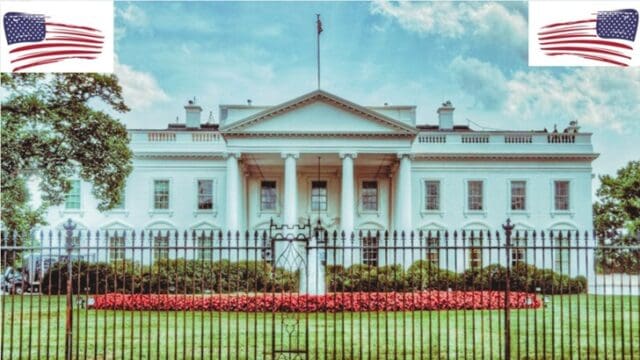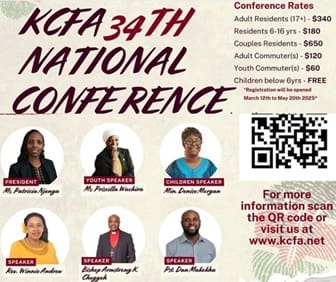
The White House Unveiled: Exploring the Fortress of Power and Security. Step into the center of America’s political powerhouse, The White House.
In this captivating article, we peel back the layers of security and delve into the hidden inner workings of the iconic building that has housed countless Presidents.
Explore the intricate balance between history, power, and protection that makes the White House the ultimate fortress.
From the imposing gates that welcome visitors to the meticulously manicured gardens, every facet of the White House exudes authority and strength. Discover the strategic design features that allow the President to navigate the corridors of power while safeguarding their well-being.
Gain an insider’s perspective on the measures taken to ensure the safety of the President and their staff, as well as the classified technologies that keep the White House one step ahead of potential threats.
History of the White House
The White House, an emblem of the United States government, has a rich and storied history that dates back to its construction in the late 18th century. Designed by James Hoban, the building was chosen as the official residence for the President of the United States after George Washington selected the site in 1791. The cornerstone was laid in 1792, and after nearly eight years of construction, the White House was completed in 1800, just in time for John Adams, the second President, to move in. The building’s neoclassical architectural style embodies dignity and strength, reflecting the ideals of the nascent nation.
Over the years, the White House has undergone significant changes and renovations, adapting to the evolving needs of the presidency. The most notable event in its history was the burning of the White House by British forces during the War of 1812 in 1814. After the attack, President James Madison oversaw the rebuilding effort, which restored the structure with modifications. The building was repainted white, giving rise to its iconic name. Throughout the 19th century, various presidents made further enhancements, including the addition of the portico and the expansion of the residence.
The White House has also been a witness to many significant historical events and social changes. From hosting the first official presidential dinner to the civil rights movement’s implications on policy and representation, the building has served as a backdrop to the evolution of American democracy. The White House has continually represented the nation’s values, challenges, and triumphs, solidifying its position not just as a residence, but as a symbol of the American spirit.
Architectural features of the White House
The architectural design of the White House is as iconic as its history, combining elements of neoclassical style with modern adaptations. The structure features a distinctive white-painted Aquia Creek sandstone façade, which contributes to its timeless appeal. The building’s facade is characterized by its symmetrical shape, tall columns, and rounded windows, all of which convey a sense of grandeur and authority. The central block is flanked by two wings, the East Wing and the West Wing, each serving distinct functions related to the daily workings of the executive branch.
Inside, the White House is equally impressive, boasting 132 rooms, 35 bathrooms, and 6 levels. The State Floor is where many official events are held, featuring the lavish East Room, the Blue Room, and the Red Room, each decorated in a style that reflects the period of the respective administrations. The Oval Office, perhaps the most famous room in the building, serves as the President’s workspace and is designed to symbolize power and leadership. The decor, often personalized by each president, tells a story of American heritage and tradition.
The landscaping surrounding the White House is just as meticulously designed, with the iconic Rose Garden and Jacqueline Kennedy Garden offering serene spaces for reflection and public events. The grounds also feature walking paths, fountains, and a variety of trees and plants, showcasing the natural beauty of the capital. The exterior architecture, combined with the elegant interiors and lush gardens, creates a picturesque setting that embodies the ideals of the nation.
The role of the White House in American politics
The White House is not just a residence; it serves as the heart of American politics and governance. It is the official workplace of the President and a hub for decision-making, where policies are formulated, and national strategies are discussed. The Oval Office, conference rooms, and the Cabinet Room are all vital spaces where the President meets with advisors, conducts meetings with world leaders, and addresses the nation. This dynamic environment is essential for the functioning of the executive branch, reflecting the President’s influence over both domestic and foreign affairs.
Furthermore, the White House acts as a symbol of the American political system, representing the nation’s values and ideals. It is a place where historical decisions have been made that have shaped the course of the country. From the New Deal under Franklin D. Roosevelt to the civil rights legislation championed by Lyndon B. Johnson, the White House has been at the forefront of pivotal moments in American history. The decisions made within its walls resonate across the nation and even the globe, making it a focal point for political leadership.
Additionally, the White House plays a significant role in public relations and media interactions. Presidential press conferences and briefings are held in the James S. Brady Press Briefing Room, where reporters gather to ask questions and hold the administration accountable. This interaction between the executive and the media is crucial in shaping public perception and maintaining transparency. The White House is, therefore, a complex institution that embodies the principles of democracy while navigating the intricacies of political power.
The security measures at the White House
Given its stature as the residence of the President of the United States, the White House is fortified with an extensive array of security measures designed to protect both the occupants and the building itself. The perimeter is secured by a formidable fence, equipped with sensors and surveillance cameras to deter potential intruders. The Secret Service is responsible for the protection of the President and their family, employing both visible and covert tactics to ensure safety at all times.
Inside, security protocols are equally stringent. Access to the White House is limited and controlled, with numerous checkpoints that screen individuals before they can enter. The Secret Service employs a team of agents who monitor activities around the clock, utilizing advanced technology, including surveillance drones and facial recognition systems, to identify potential threats. These measures are complemented by regular drills and emergency response training to ensure preparedness for any situation that may arise.
The White House also incorporates various physical security features, such as reinforced windows and blast-resistant doors, designed to withstand potential attacks. The building’s layout has been optimized for safety, with secure areas that can be locked down in the event of a breach. Through a combination of state-of-the-art technology, strict access controls, and highly trained personnel, the security of the White House remains a top priority, allowing the President to focus on governance without compromising safety.
Public access to the White House
While the White House is primarily the home and workplace of the President, it also opens its doors to the public, allowing citizens to experience its historical and architectural significance. Public tours are available, offering visitors a chance to explore certain areas of the building, including the East Room, the State Dining Room, and the iconic Blue Room. These tours provide insight into the rich history of the residence and the many presidents who have lived and worked there.
Access to the White House for tours typically requires advance planning, as they are often booked months in advance. Visitors must submit requests through their congressional representatives, who can arrange for a tour. This process emphasizes the connection between the government and its citizens, highlighting the White House’s role as a national landmark accessible to the public.
In addition to regular tours, the White House hosts special events throughout the year, including the famous holiday decorations that draw thousands of visitors. During these events, the building is transformed, showcasing festive displays that celebrate the spirit of the season. This accessibility to the public fosters a sense of pride and ownership among Americans, as they are invited to engage with their government in a setting that symbolizes the nation’s history and democracy.
VIDEO: Kanye West’s ten minute rant in White house leave Trump stunned
Famous events and ceremonies held at the White House
The White House has been the stage for numerous famous events and ceremonies that have left an indelible mark on American history. From presidential inaugurations to state dinners, the significance of these gatherings cannot be overstated. Inauguration Day, held every four years, is a particularly momentous occasion when the President-elect is sworn into office on the steps of the Capitol. However, the White House plays host to many pre- and post-inaugural events, including celebratory receptions that bring together dignitaries and the public.
State dinners, another hallmark of White House events, are grand affairs that showcase international diplomacy and cultural exchange. These formal dinners are held to honor visiting foreign leaders and often feature elaborate menus, entertainment, and speeches. Attendees include members of Congress, prominent figures from the arts and sciences, and other influential individuals, making these events a blend of politics and social engagement. The preparation for a state dinner involves meticulous planning, from the guest list to the floral arrangements, underscoring the importance of hospitality in diplomacy.
The White House also serves as a venue for significant commemorative events, such as the annual Easter Egg Roll on the South Lawn. This family-friendly tradition attracts thousands of children and parents, fostering a sense of community and celebration around the Easter holiday. Additionally, the lighting of the National Christmas Tree is another cherished event that draws large crowds and is broadcast nationwide. Through these events, the White House not only fulfills its role as a center of governance but also as a symbol of American culture and unity.
Interesting facts about the White House
The White House is steeped in fascinating history and trivia that add to its allure. Did you know that the building has been home to every U.S. president except George Washington? Washington oversaw its construction but never lived in it, as it was completed in 1800, after he had already left office. The White House has also been expanded and renovated numerous times, with the West Wing being built in 1902 under President Theodore Roosevelt to accommodate the growing demands of the presidency.
Another intriguing aspect of the White House is its size and scale. The building contains approximately 55,000 square feet of space, making it one of the largest residences in the world. It features 132 rooms, 35 bathrooms, and 6 floors. The White House also boasts a variety of amenities, including a swimming pool, bowling alley, and a movie theater, showcasing the unique lifestyle of its residents. The building is also home to a collection of artwork and historical artifacts, including portraits of every U.S. president, adding to its cultural significance.
Moreover, the White House has its own unique address: 1600 Pennsylvania Avenue NW, Washington, D.C. This iconic location has become synonymous with American politics and governance. It is not just a residence but a symbol of democracy and the American ideals of freedom and justice. The White House has witnessed countless historical moments, from the signing of treaties to the hosting of global leaders, making it a living testament to the nation’s journey.
Virtual tour of the White House
For those unable to visit the White House in person, a virtual tour offers a unique opportunity to explore its grandeur from the comfort of home. The White House provides an interactive online experience that showcases key rooms and areas, allowing users to navigate through the historic halls and learn about their significance. This digital access is invaluable for students, history enthusiasts, and anyone interested in American politics and culture.
During the virtual tour, visitors can view stunning images of the State Rooms, including the East Room, the Blue Room, and the Red Room, each adorned with exquisite decor and historical artifacts. Detailed descriptions accompany the visuals, providing context about the furnishings, artwork, and the events that have taken place in these iconic spaces. The tour also includes insights into the architecture of the building and its evolution over the years, enriching the viewer’s understanding of the White House’s role in American history.
In addition to the static virtual tour, various video segments and interviews with historians and staff further enhance the experience. These resources offer a behind-the-scenes look at the day-to-day operations of the White House, the planning of state events, and the intricate measures taken to preserve this national treasure. The virtual tour serves as an educational tool that bridges the gap between the public and this historic institution, fostering a deeper appreciation for its significance.
Conclusion
The White House stands as an enduring symbol of power, history, and resilience in the heart of Washington, D.C. Its rich history, exquisite architecture, and vital role in American politics make it a fascinating subject of exploration. From the security measures that protect its occupants to the public access that invites citizens to engage with their government, the White House embodies the principles of democracy and the American spirit.
As we conclude our journey through this iconic fortress, it is clear that the White House is more than just a building; it is a living monument to the ideals and values that define the United States. The stories held within its walls, from monumental decisions to cherished traditions, continue to shape the nation. Whether through an in-person visit or a virtual tour, the opportunity to delve into the world of the White House is an invitation to connect with the very essence of American history and governance.
In a constantly changing political landscape, the White House remains a steadfast beacon of democracy, reminding us of the importance of leadership, accountability, and the enduring quest for a more perfect union. As we reflect on its significance, we are reminded that the White House is not only the residence of the President but a shared symbol of hope, freedom, and unity for all Americans.
About the Author
Isaac Mbugua is a Senior Journalist and Digital News Writer at Diaspora Messenger News Media
Kenyan Politician Humiliated Trying to Take Selfies at White House








